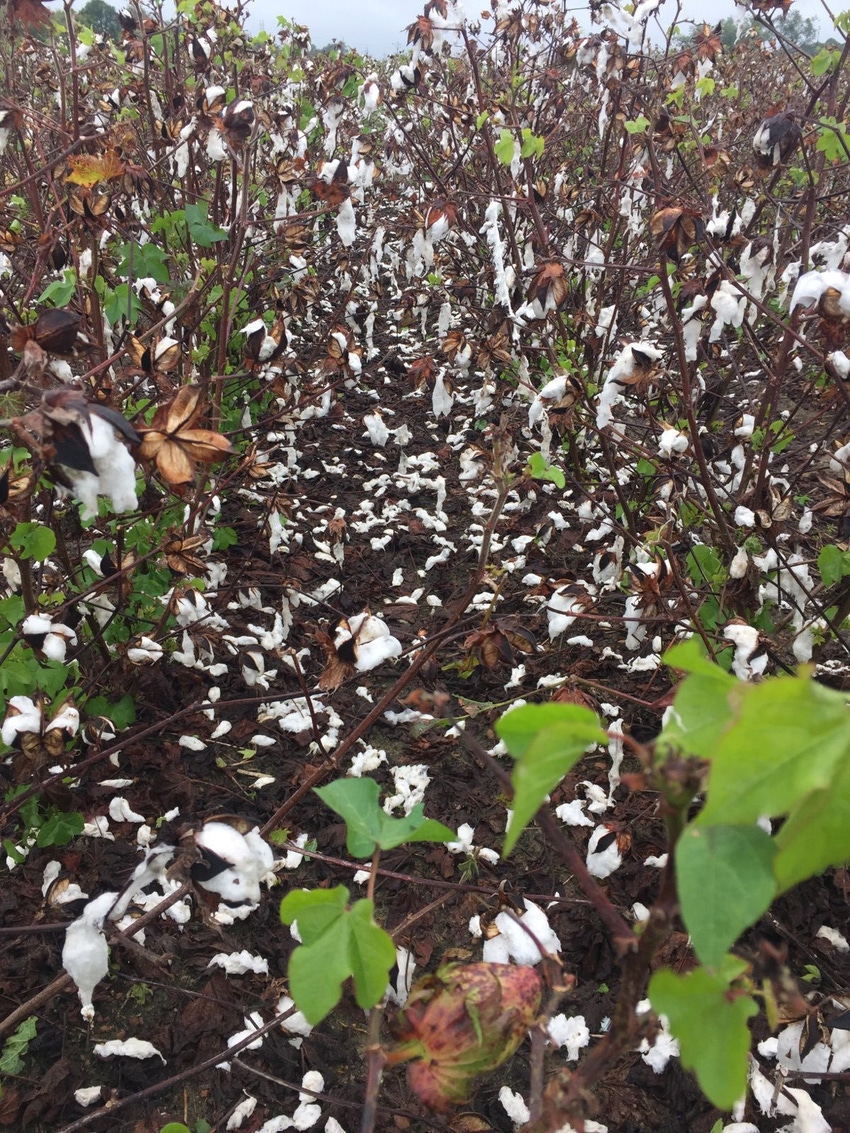
Hurricane Irma began its attack on the Southeast late on Sept. 9, hitting south Florida in force with a projected path up the peninsula’s western coast and into other Southeastern states.
With a more westerly trek up Florida’s coast, major orchard and row crop production for the Southeast is in danger. Southeast agriculture doesn’t need an Irma, especially at this time as harvest approaches for primary crops. It would mark three years in a row a devastating tropical weather event hit at or near harvest time for row crop farmers in the region.
Andy Robinson farms peanuts in Levy County only 30 miles as the crow flies inland from Florida’s gulf coast. The Robinson family co-owns a buying point and peanut shelling facility in Williston. The storm’s track placed them in its very dangerous path. The Robinsons had set their plans to stay.
“(We) still have one farmer insisting on picking peanuts today. We told him we were locking the gates at six whether he's got them here or not. Everybody else is trying to tie down the last loose ends and find the strongest shelter. Appreciate any prayers,” Robinson said in a text message Sept. 9.
Though the storm has repositioned its approach to Florida from east to west coast, Florida’s citrus and sugarcane industries remain in its crosshairs, and orchards and fields are particularly vulnerable. The citrus is on the trees now and sugarcane harvest is only about a month away.
The storm is expected to steer northwest up into Florida's panhandle and into south Georgia with sustained hurricane-force winds.
Georgia’s pecan crop as of Sept. 10 was about a week to 10 days ahead of typical schedule. Early varieties, such as Pawnee, were experiencing shuck split and harvest was only one or two weeks away for them. Irma’s current track has her eye going straight through the hub of pecan production in the country’s top pecan-producing state.
“Our crop looks good right now and we don’t need a storm like this to pass through at this point. I’ve seen many heavily loaded trees that don’t need any wind at all,” said Lenny Wells, University of Georgia Extension pecan specialist.
Best case scenario at this point is Irma will deliver just 30 mph to 40 mph winds to south Georgia, he said, which the pecan trees can withstand and only lose some limbs and nuts. But Irma may cross the state line with much stronger winds at 60 mph or more, which will topple trees and more dramatically damage the crop estimated to be close to 110 million pounds in 2017.
Wells said growers would normally keep irrigating at 100 percent through mid-September. But in lieu of the storm, he told growers last week to shut off the water to allow soil to stiffen up in orchards before Irma’s winds arrived.
Half of Georgia’s cotton crop was picking up speed on maturity by Sept. 10, with an estimated 40 percent or more with open bolls, said Jared Whitaker, UGA Extension cotton specialist, in a phone interview late Sept. 9. Some fields are defoliated and ready for harvest. There is a very real concern that hurricane-force winds will rip lint out of those bolls, he said, and mangle plants with full leaf canopies that haven’t been defoliated.
How much damage Irma will bring to southern cotton can’t be known now.
When Hurricane Matthew whipped through the lower Southeastern coast last October, Whitaker said in east Georgia the 30 mph to 40 mph winds felt inland from Matthew stripped at least a bale per acre away from cotton that was ready to be harvested at that time. He was in one such field following that storm and from the ground picked up that much cotton and ginned it to see how much the storm took. Winds as high or higher from Irma are threatening major cotton-producing regions in the Southeast. One must assume in the coming week, cotton will be lost.
Right now, losing harvest potential is preferred over losing much more.
Previous editor’s note: Update for this story as of Sept. 10 at 8:05 p.m.:"This is an update for Georgia’s food industry regarding what to expect during a post-disaster visit from a Georgia Department of Agriculture Food Safety Inspector. Hurricane Irma’s current track represents a major threat to the State of Georgia with the effects being felt early tomorrow and into Tuesday. This storm is expected to enter SW Georgia as either a Category 1 hurricane or a strong tropical storm, bringing the potential for damaging winds, heavy rains and flash flooding, storm surge and possible tornadoes, all of which may cause widespread power outages, injury, and other damage."
About the Author(s)
You May Also Like






